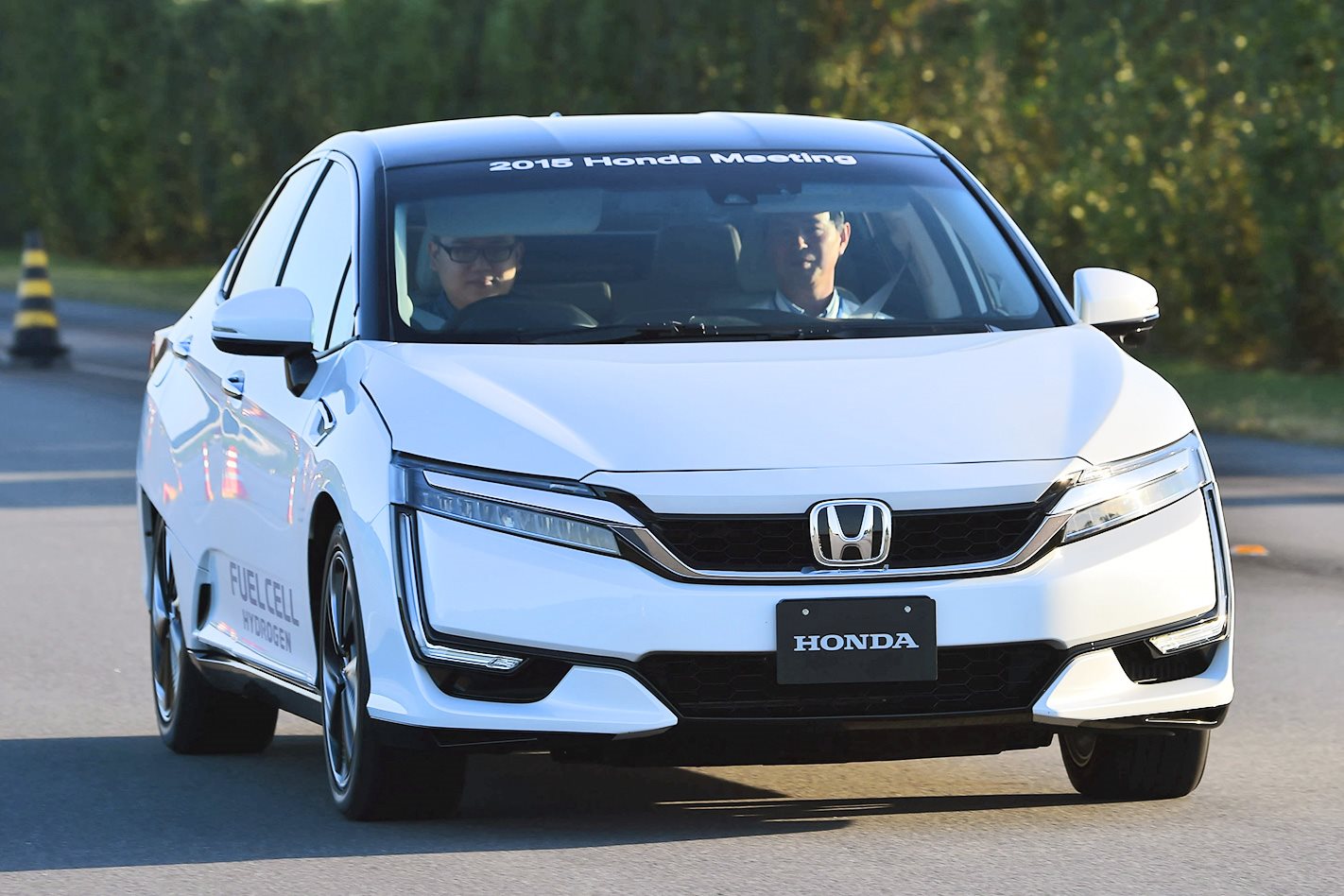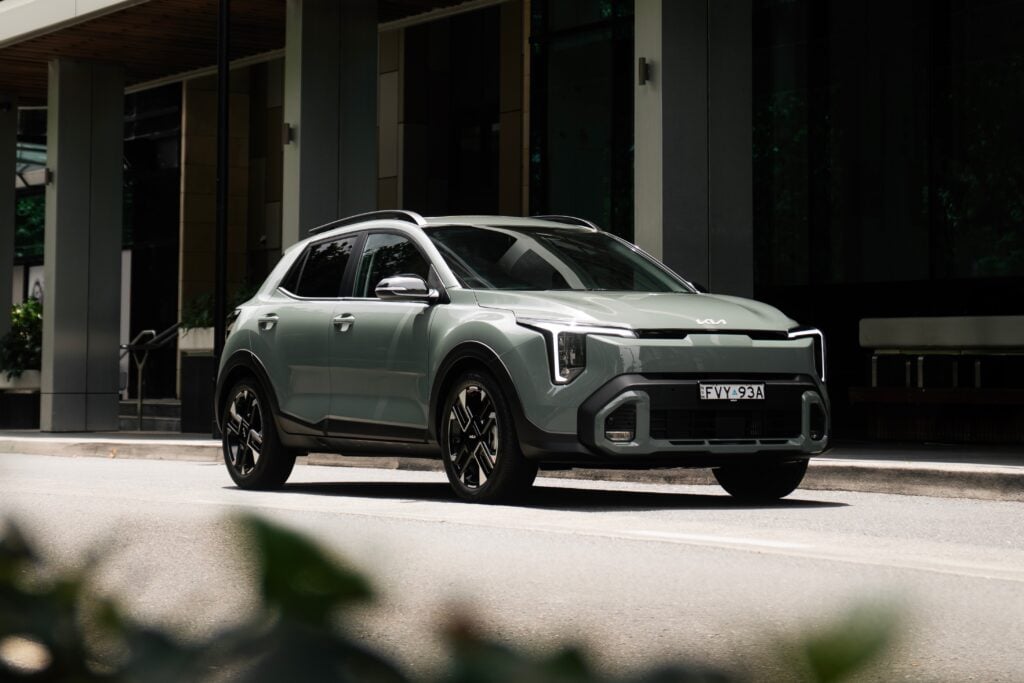The future is already here, particularly if you’re a Back to the Future II fan, and in the case of hydrogen-powered, zero-emission cars, it’s been here for a while, it’s just that not many of us actually live in it.
Honda was the first to register a hydrogen fuel cell vehicle, the original FCX Clarity, and it has just launched an all-new, bigger, more powerful and more practical version at the Tokyo Motor Show. Wheels has been lucky enough to drive one, a pleasure no one will be enjoying in Australia for some time yet.
WHAT IS IT? A genuine five-seater sedan replaces the sloopy-looking Clarity of old, with much improved packaging – and room for three golf bags in the boot – thanks to the engineers shrinking the tricky, electricity-generating power unit by 33 per cent. Despite that they’ve also managed to lift power by 30 per cent and torque by 70 per cent, and are claiming a range of 700km. The Clarity Fuel Cell is either the future of driving as we know it, or a very expensive science project.
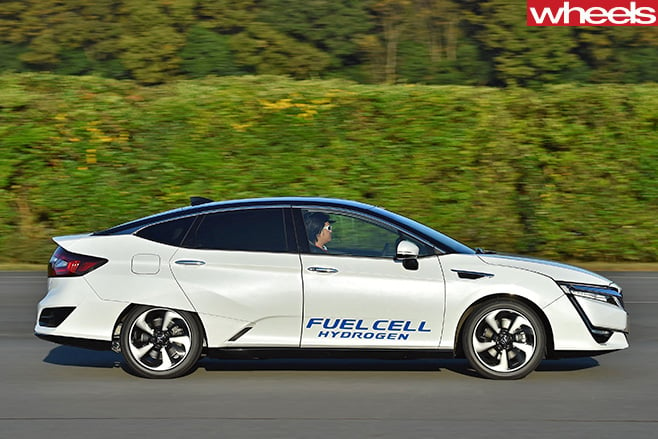
MAIN RIVALS Both Toyota and Hyundai have been trying to follow where Honda led in the hydrogen space, but neither are really setting the sales charts alight, with the Tucson FCV only available on a lease system in the US. Realistically, this car’s main rivals include every EV and PHEV on the market, because they could prove a more palatable option, thanks to existing infrastructure.
THE WHEELS VERDICT WHILE its busy looks might not win everyone, or anyone, over to the idea of FCV ownership, the Clarity Fuel Cell is undeniably an important car, and one that feels properly and uniquely engineered from a clean sheet of paper. It has the same thrust from zero rpm as an EV, but promises better range and better utility. It remains to be seen what it’s like outside the controlled environment of a test facility, and how realistic that 700km range estimate is in the real world.
PLUS: Super advanced technology that’s truly green; better packaging means it’s a proper family car; EV-style acceleration and whisper quiet operation at cruising speeds; much improved range, power and torque MINUS: Likely to be expensive, although some countries will offer tax incentives; hydrogen stations few and far between; we can’t have one in Australia

Then there was the fact that looking at it made you sad; if this is what the future was going to look like, you’d rather endure smog and acid rain.
Now Honda has launched a new Clarity Fuel Cell vehicle, which it says is fun to drive, has a genuine range of 700km, produces only clown’s tears from its exhaust and looks… better than the old one. In fact, from front on it looks kind of futuristically cool, but sadly from side-on or behind it seems as though it was sketched by someone whose design philosophy is the opposite of less is more.
A Honda engineer admitted to me that the panels covering the rear wheels – early Citroen style – aren’t all that necessary aero-wise, and are more of a look-at-me design feature. They should have left it out.
What’s also obvious at first glance is that this new Clarity, which aims to re-stamp Honda’s name as the dominant force in the still tiny hydrogen market – there are now a total of “around 20” places in Japan where you can fill one up – is a much bigger car.
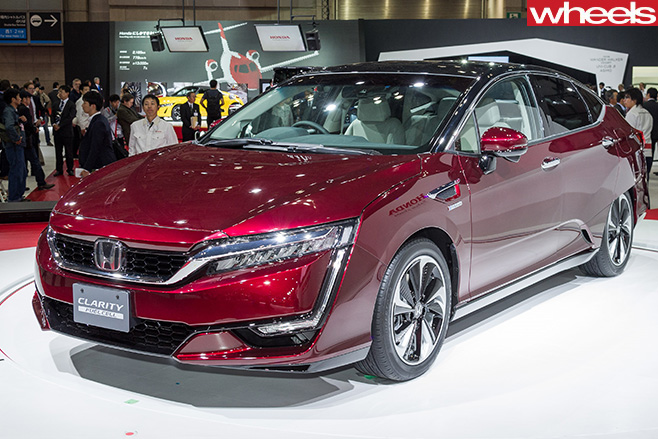
Space has been freed up to carry five adults in comfort, and three golf bags in the boot, by shrinking the Power Control Unit by a whopping 33 per cent, to the point where it’s around the same size, and weight, allegedly, as a Honda V6.
The Clarity’s motor can thus be placed traditionally in the engine bay, with the batteries under the floor and one huge, and expensively carbon-fibre wrapped, hydrogen tank behind the rear seats (plus a smaller spare, just in case).
Miniaturising has been made possible by reducing the “stacked cell count”, and yet improved technology means the new unit offers 30 per cent more power, with 130kW, and 70 per cent more torque, at 300Nm.
The engine can rev to 13,000rpm and, while it’s EV quiet off the line, it does wind up to a kind of jet-turbine whoosh when you really plant your foot. It’s not going to make you forget what internal-combustion engines sounded like, but it’s better than the nothing you get from some electric vehicles.
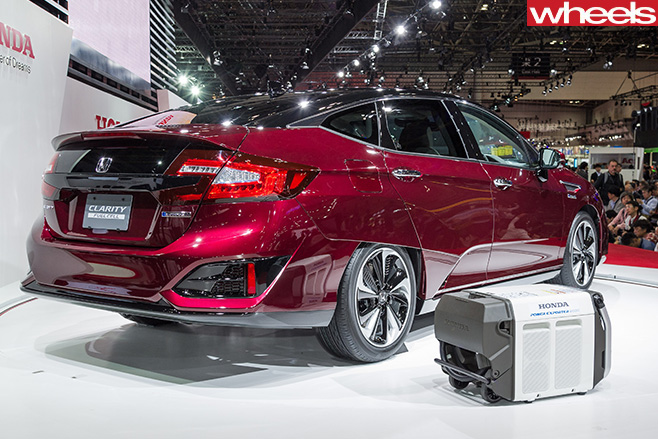
Response is certainly instantaneous, however, and the interior feels familiarly Honda, without too many futuristic fripperies.
Maruyama says Honda is pursuing a joint-development plan with GM, with an FCV being born from those efforts in 2020, and he believes the real popularity of hydrogen cars will start to be seen from 2025 onwards, when we will start moving towards a “hydrogen-based society”.
In the meantime, Honda is attempting to make life easier for Clarity owners by launching its own Smart Hydrogen Station, a snazzy little box just 3m high and 2.5m wide, which contains a high-pressure water-electrolysis system that can produce enough hydrogen to power two or three cars.
The idea is to install these SHS units at your local shops, or town hall, hook them up to tap water and a power supply, and you’ve got hydrogen for your Clarity, even where there are no filling stations.
The company has also come up with an ingenious external mobile charger, the Power Exporter 9000, which you can plug into your FCV and use to power your house for up to a week, in times of emergency, or if you just feel like thumbing your nose at The Grid.
SPECS Model: Honda Clarity Fuel Cell Engine: hydrogen fuel cell powered electric motor Max power: 130kW Max torque: 300Nm Weight: TBC 0-100km/h: not available Fuel economy: not available Price: $89,000 (in Japan)

